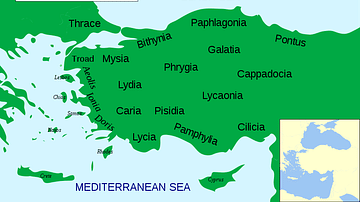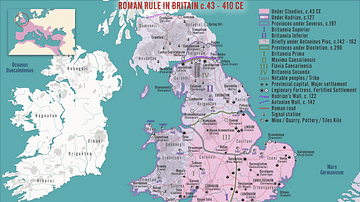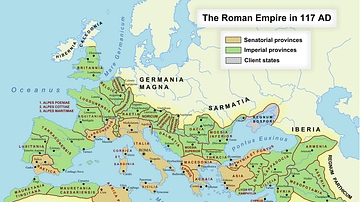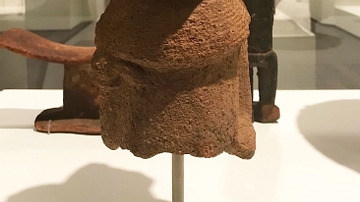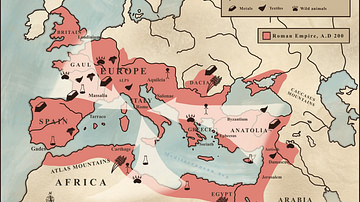Illustration
A map illustrating the geopolitical landscape in Asia Minor during the reign of emperor Septimius Severus around 200 CE. The territory (comprising modern-day Turkey) had been under Roman control for several centuries following conquests by the republic and subsequent annexations by the empire. Administratively, the region was divided into several provinces, including Bithynia et Pontus, Galatia, Cilicia, Cappadocia, Asia, and Lycia et Pamphylia, each governed by a Roman-appointed official.
This period witnessed a flourishing of Roman cities, infrastructure development, and the spread of Roman culture and language. To the east, several client kingdoms like Armenia and Osroene had complex relationships with the empire, balancing independence with allegiance to Roman authority. Despite occasional revolts and challenges, Roman rule generally brought stability and prosperity to Asia Minor, leaving a lasting imprint on its society and shaping its future trajectory.
Cite This Work
APA Style
Netchev, S. (2024, February 27). Roman Rule in Asia Minor, c. 200 CE. World History Encyclopedia. Retrieved from https://www.worldhistory.org/image/18561/roman-rule-in-asia-minor-c-200-ce/
Chicago Style
Netchev, Simeon. "Roman Rule in Asia Minor, c. 200 CE." World History Encyclopedia. Last modified February 27, 2024. https://www.worldhistory.org/image/18561/roman-rule-in-asia-minor-c-200-ce/.
MLA Style
Netchev, Simeon. "Roman Rule in Asia Minor, c. 200 CE." World History Encyclopedia. World History Encyclopedia, 27 Feb 2024. Web. 27 Apr 2024.


